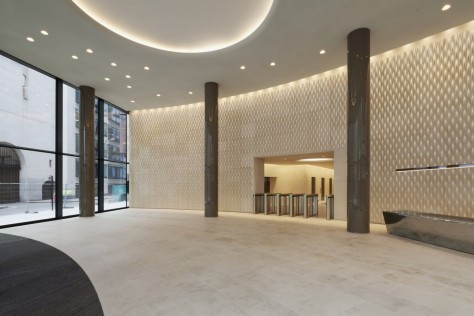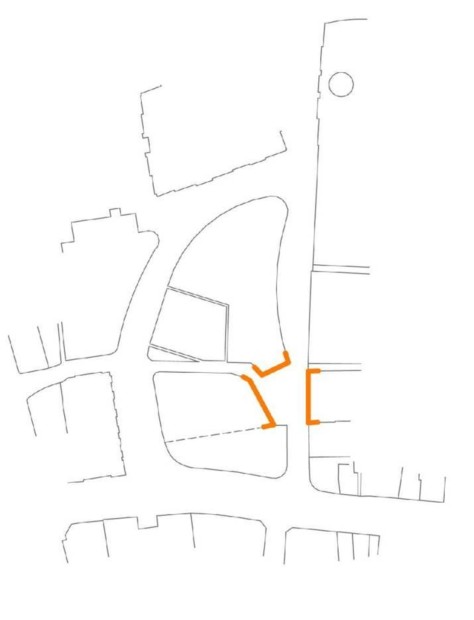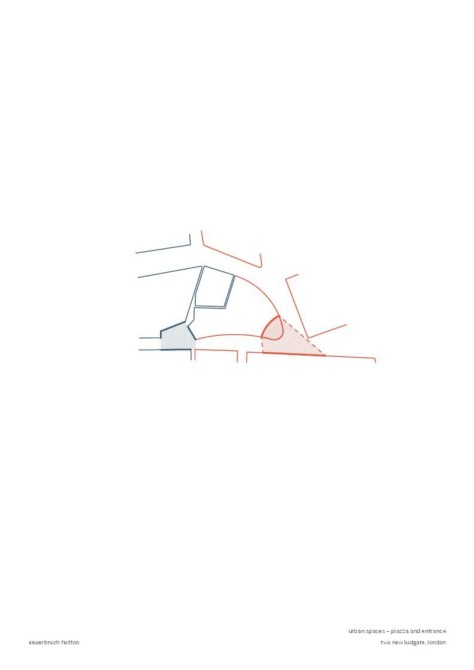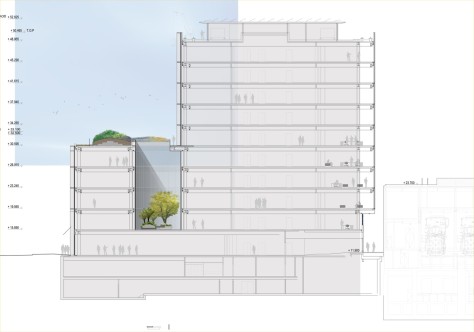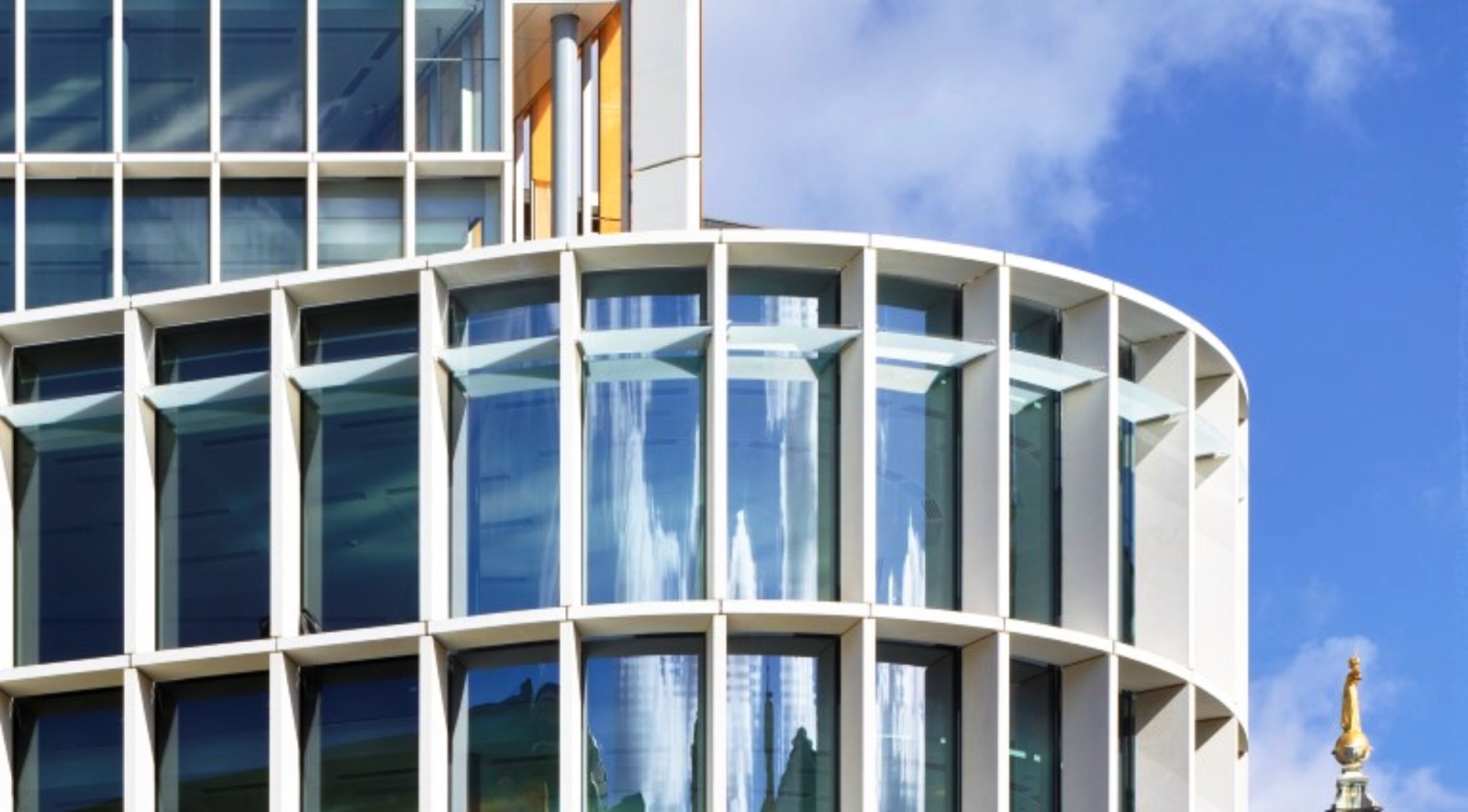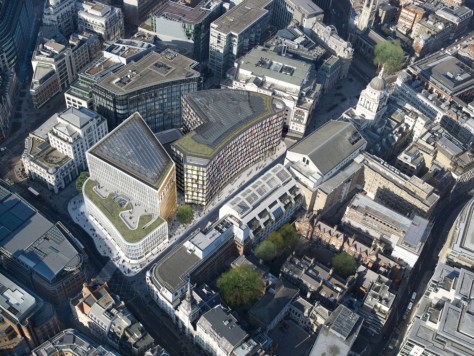
The project at New Ludgate consists of two distinct buildings, one by Fletcher Priest and one by Sauerbruch Hutton. Fletcher Priest is the masterplan architect for One New Ludgate, an elegant building distinguished by its white polished fins, while Two New Ludgate realises the vision of concept architect Sauerbruch Hutton. New Ludgate is the transformation of a City block into a generous and lively new quarter for London.

It sets up a dialogue between two striking and complementary new buildings whilst reinstating and improving the public realm around it and new routes through the city block. It is, in essence, a new piece of city. It is a site redolent with history. From here the Belle Sauvage coaching inn welcomed or saw off numerous fictional and real travellers; Pocahontas and London’s first live rhinoceros paid visits.

Later came railway engineers who put an iron viaduct across Ludgate Hill, and World War II, which left the site in ruins. The site on the old city wall of Ludgate Hill was formerly home to some outdated 1980s office buildings, the tallest element of which breached Primrose Hill viewing corridor height restrictions, and which offered little in the way of public amenity, with a dull sunken arcade at its lower levels.

Fletcher Priest was asked to masterplan the site by Land Securities, separating it into two headquarter-sized office buildings – 30 Old Bailey to the north, designed by Sauerbruch Hutton with Fletcher Priest as executive architect, and 60 Ludgate Hill, designed by Fletcher Priest. By creating a new passageway between the two – a route named Belle Sauvage after the 15th century coaching inn that once operated nearby and featured in Pickwick Papers and Tom Brown’s Schooldays – the scheme could also form a new open space at the east that catches the lunchtime sun for office workers and the public alike.

The square here – with a nod to precedents in Rome, is defined by façades and plays off an existing terracotta Victorian elevation opposite. This space has been designed with as little of a ‘corporate’ feel as possible. Around the site, street lines, grades and views are repaired and improved, such as the processional route to the western entrance of St Paul’s. This, along with much of the massing of the scheme and the curve of the street, was generated by the St Paul’s view corridor, while the main design idea was to reinstate the connection of old City lanes from Farringdon, building on a site that is steeped in history and where the Fleet River used to flow.

The 165,000 sq ft One New Ludgate building itself comprises nine storeys plus ground floors. It is animated by and bars and retail outlets under fixed white glass awnings The building uses a façade concept of a masonry grid that keeps off direct sunlight and throws light onto the floorplates and, when viewed obliquely from the street’s wide pavements, gives a solidity to the building. ‘We wanted something quite cool and modern, whereas the other building may be more playful’, says Barton.

White precast concrete frames, simply detailed, respect their neighbours and set off the floor-to-ceiling low-ion glazing, while vivid amber ‘Kathedral’ glass fins are used on the piazzetta ‘accent’ façade in the new public space, where a mature tree provides shade and visual link for Belle Sauvage. A floating plane of photovoltaic cells lines the roofscape along with plant and a green roof, while both buildings flank a still-operating two and a half-storey city electrical interchange, which allows light into the heart of the site.

One New Ludgate also boasts extensive private external space, accessible from every office floor. This includes set-back loggia and balconies and a substantial south-facing terrace with uninterrupted views of St Paul’s which is capable of accommodating 300 people at the fifth floor set-back level, landscaped as elsewhere by Gustafson Porter.

Retail and restaurants line the ground floor, reinstated at grade, while the passageway’s York stone paving morphs from standard York stone into dark granite to draw pedestrians through. In terms of sustainability, both buildings are BREEAM ‘Excellent’, influenced mainly in 60 Ludgate Hill’s case by the amount of daylighting it has been designed to achieve, reducing the need for artificial light on the office floors.
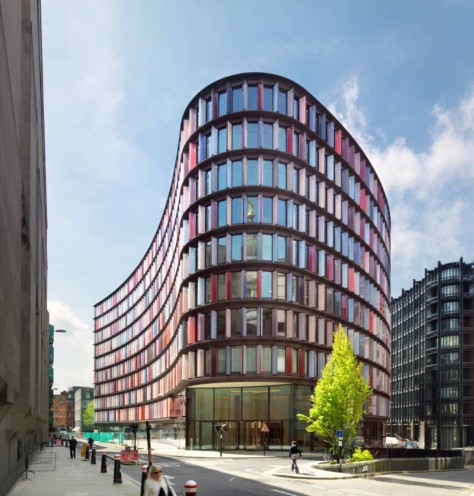
The collaboration helped the planning and letting process with both teams appearing at committee and helping to achieve a relatively straight forward passage through the planning system. There were a lot of gains for the city including the repair of the public realm wider pavements, the new element of public space, and the reinstatement of the St Paul’s viewing heights so that the breach was taken away. Source Fletcher Priest Architects.

Location: London, UK
Architects: Fletcher Priest Architects, Sauerbruch Hutton Architects
Landscape Architects: Gustafson Porter
Quantity Surveyor: Gleeds
Structural Consultant: Waterman
Services Consultant: Waterman
Fire: Consultant Arup
Lighting Consultant: Speirs & Major Associates Ltd
Acoustic Consultant: Hann Tucker Associates
Access Consultant: Buro Happold (London)
Main Contractor: Skanska
Client: Land Securities
Planning: Authority City of London
Photographs: Timothy Soar, Paul Grundy, Jan Bitter, Courtesy of Fletcher Priest Architects


